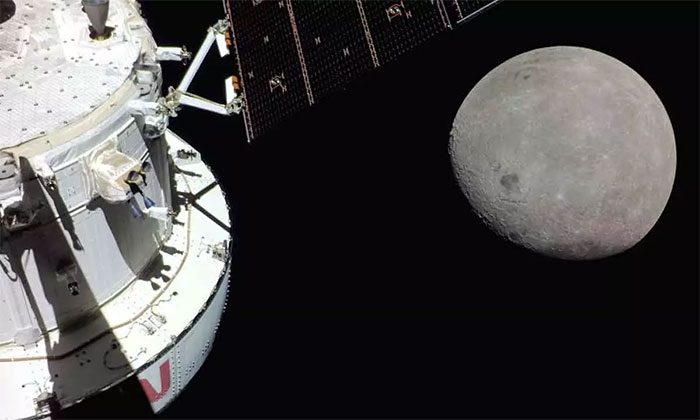With the success of the Artemis 1 mission, human presence on the Moon in the near future and the extraction of water has become critically important. Therefore, scientists are working on ways to extract water from lunar rocks.
In 1970, American astronaut Neil Armstrong predicted that humans would live in research bases on the Moon “within our lifetime.”

Image of the Moon next to the Orion spacecraft from the Artemis 1 mission – (Photo: NASA).
Ten years after Armstrong’s death, lunar tourism has returned to the agenda. Research teams around the world are working to fulfill NASA’s dream of establishing a human presence on the Moon within a decade.
Among them is an interdisciplinary team at The Open University (UK), who are exploring ways to extract water from lunar rocks. This could lay the foundation for a continuous human presence on the Moon.
The lead scientist of the project, Professor Mahesh Anand, anticipates that humans will live on the Moon in research stations. This will facilitate deeper exploration of the Solar System, including the first crewed mission to Mars.
Professor Anand considers the cold far side of the Moon to be “one of the greatest mysteries of science.”
By studying lunar dust and lunar rocks (known as regolith) collected during the early Apollo missions, Anand’s research team discovered that regolith contains high levels of oxygen, indicating that water can be produced by adding hydrogen and heating the soil to trigger a reaction.
This aligns with satellite data showing ice at the cold poles of the Moon.
Anand’s colleagues will send a device they designed with NASA’s upcoming Artemis 2 mission, expected in 2024. This device, known as a space mass spectrometer, will drill into lunar rock, extract, and analyze water.
The research on water extraction is crucial since the cost of sending 1 kg of any material into space is estimated to be around $1 million. Therefore, extracting water will be significantly more cost-effective.
Anand’s research also includes melting lunar dust using microwaves and using 3D printing technology to create habitat construction materials for humans. He is also investigating growing plants in volcanic ash, similar to lunar dust.
This work has applications on Earth as well: Anand has utilized microwave technology developed for reprocessing lunar dust to extract valuable materials from mining waste.
Roland Trautner, head of space equipment development at the European Space Agency – which funds and coordinates a significant portion of European space research, stated that The Open University’s research provides a new large-scale lunar exploration program that is “rapidly developing.”


















































